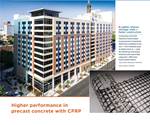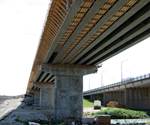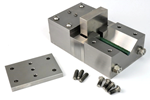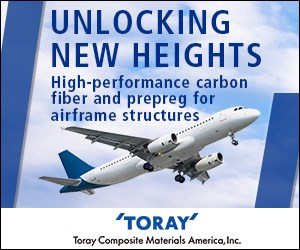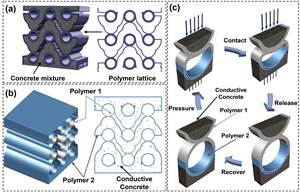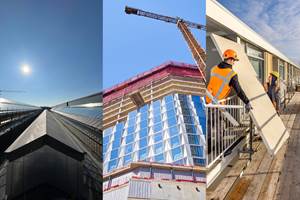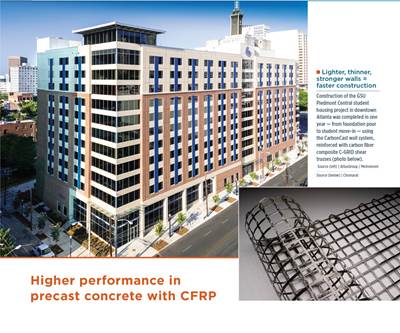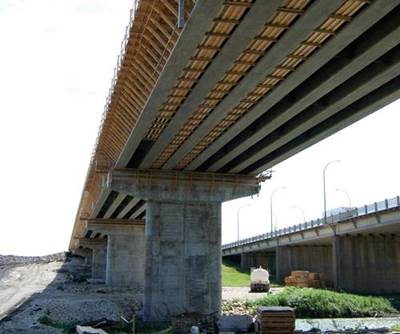The potential of rCF in fiber-reinforced concrete
A look at how emerging technologies for FRP concrete provide alternatives to traditionally used steel and glass fibers that are more cost-effective and address the sustainability challenge.
Figure 1. Mud Creek Bridge, U.S. Highway 52 in Rush County, Indiana, features the repair of connections between existing prefabricated elements using ultra high-performance concrete (UHPC) reinforced with steel fibers. Source | Bryan Hall – Nox Mysterium Productions
Fiber use in concrete is not a new concept. Fibers of different types have been added to mortar and bricks dating all the way back to ancient times and incorporated into some of the earliest human constructions to enhance structural strength. While the concept isn’t new, the types of fibers and their associated benefits have evolved significantly. Today, modern fibers include steel, glass, synthetic and natural fibers, providing characteristics that significantly improve certain aspects of concrete’s overall performance such as improved plastic shrinkage, structural strength, weight reduction and longevity, to name a few.
There are also various types of concrete currently being used in construction, one of which is ultra high-performance concrete (UHPC). Comprised of cement, silica fume and other granular constituents, in addition to a high percentage of discontinuous internal fiber reinforcement, UHPC became commercially available in the U.S. in the early 2000s. Its strength, durability, flexibility and low water-to-cement ratio have increasingly made it a material of choice for many state departments of transportation as they engage in its research, development and deployment. For example, UHPC is rated as having compressive strengths of more than 21,750 psi (150 MPa) and can exceed 36,250 psi (250 MPa). In contrast, traditional concrete typically has a compressive strength between 2,500 psi (17 MPa) and 4,000 psi (28 MPa). In addition, UHPC’s tensile strength and ductility have been shown to be two to four times greater than conventional concrete.
According to the U.S. Department of Transportation (USDOT) Federal Highway Administration, “The mechanical and durability properties of UHPC make it an ideal candidate for use in developing new solutions to pressing concerns about highway infrastructure deterioration, repair and replacement”1 (Fig. 1). This has been exemplified through consideration or application of UHPC in a variety of infrastructure applications over the last couple of decades. According to the USDOT, these include precast concrete piles; field-cast closure pour or grout material for applications requiring on-site connection of multiple prefabricated elements; bridge rehabilitation activities such as deck overlays and link slabs; and more. The Federal Highway Administration continues to compile hundreds of use references in the U.S. and globally as UHPC gains increasing acceptance and use, particularly for connections between prefabricated bridge elements and for bridge preservation and repair.
Carbon fiber as an alternative to traditional steel, glass fibers
The use of fibers in concrete has been proven as a method that enables more architecturally complex and aesthetic structures by increasing strength and longevity while lowering weight by reducing or eliminating the use of steel (Fig. 2). Currently, steel fibers continue to be the most common reinforcement in UHPC due to the mechanical properties they impart, such as higher peak load and ductile behavior under compressive loading.2 However, over the years other fiber types — synthetic fibers like PVA and PP, mineral fibers, natural fibers and, increasingly, carbon fibers — have been applied and several studies have been published that compare the various benefits of these different fiber types in concrete.
Figure 2. In 2018, glass fiber-reinforced concrete was used to develop these intricately designed panels for a building in Kuala Lumpur, Malaysia. Source | Shutterstock
Carbon fiber has shown that it can outperform both steel and glass fibers. Not only can it greatly improve the mechanical ability of concrete, but it can achieve this at a fraction of the weight. For example, the USDOT recommends 263 pounds of steel fiber per cubic yard of concrete3. This makes up about 6.2% of the total weight of a cubic yard of concrete.Meanwhile, carbon fiber is typically used at a rate of 1%, with 80% less weight (density of 1.6 versus 7.8 grams per cubic centimeter).
RCF to further increase sustainability
But while performance and lightweighting continue to be key advantages for fiber-reinforced concrete, including UHPC, the construction industry must increasingly consider the carbon impact of materials. According to the 2023 study, “Lower Carbon Footprint Concrete Using Recycled Carbon Fiber for Targeted Strength and Insulation,”4 concrete production is responsible for ~8% of global carbon emissions, with 4.2 billion metric tons of concrete produced worldwide, a number that has been steadily increasing. Even though using carbon fiber can reduce the amount of concrete used in construction applications, it also is made using an energy-intensive process and thus adds to these emissions. Carbon fiber’s typical high price has also been an issue.
“As we are working through commercialization opportunities in the concrete space, our interactions have taught us that lowering the carbon footprint of concrete is vital for meeting regulatory and industry sustainability goals,” notes Jeff Hall, director of client relations at CFR.
But what if there was an alternative that was already readily available to industry that could reduce these emissions and still feature some (if not a majority) of virgin carbon fiber’s (vCF) coveted properties? This is where recycled carbon fiber (rCF) could make a good case for use in UHPC.
Beginning in 2021, in an effort to advance rCF’s application relevancy, Carbon Fiber Recycling (CFR, Tazewell, Tenn., U.S.) began donating rCF to the University of Tennessee for use in studies that would investigate the mechanical properties of rCF, vCF and steel fibers in concrete. In one 2022 study5, the university “examined the compression, tension and flexural properties of recycled carbon fiber-reinforced concrete considering the microstructure of the concrete resulting from fiber dispersion.” To evaluate rCF-reinforced UHPC, the study compared two commercially available vCF — an aerospace-grade carbon fiber and an industrial-grade carbon fiber — as well as steel fibers and the rCF provided by CFR. Among other testing, the university compared each material’s mechanical properties, including compression, flexural and tensile strength.
The study revealed that rCF outperformed steel fiber and was on par with vCF (Table 1) while being more economically feasible. Results showed that roughly 61 pounds of carbon fiber per cubic yard of concrete — approximately 1.4% of the total weight of a cubic yard of concrete — is required to meet or exceed the performance of steel fiber. This is a reduction of more than 200 pounds per cubic yard or 4.8%. Studies are still ongoing and continue to yield positive results.
|
Mix |
Compression Cubes (psi)* |
Tension (psi)* |
Flexural (psi)* |
Flow (%) |
Mass (lb/ft3) |
|
Neat |
12749 ± 1450 n=3 |
756 ± 44 n=3 |
1697 ± 329 n=2 |
133 |
155.4 ± 14.3 n=2 |
|
Steel |
16404 ± 827 n=3 |
954 ± 93 n=3 |
1871 ± 405 n=3 |
74 |
151.1 ± 3.1 n=2 |
|
vCF (A) Carbon Fiber |
19508 ± 522 n=3 |
767 ± 48 n=3 |
1566 ± 170 n=2 |
44 |
135.5 ± 1.2 n=2 |
|
vCF (B) Carbon Fiber |
15548 ± 653 n=3 |
1304 ± 104 n=3 |
1426 ± 139 n=4 |
27 |
139.2 ± 0.6 n=2 |
|
rCF Recycled Carbon Fiber |
19624 ± 1218 n=3 |
999 ± 102 n=3 |
1552 ± 151 n=4 |
36 |
143.6 ± 2 n=2 |
|
*Rounded to the nearest ft⋅lb Note: n is the number of samples for each test; ± indicates the standard deviation for each test |
|||||
It is worth pointing out that the flexural properties shown above may have been improved since the measure was primarily impacted by the lack of optimal interfacial adhesion between carbon fiber filament and the cement mix and not by the actual breakage of the carbon fiber filament itself. This indicates that additional positive performance above the reported results may be possible compared to conventional steel fiber applications.
RCF’s potential, considering available supply chain
Until recently, rCF has been a novel product and not available at the production scale necessary to be widely adopted in various applications. This is changing as pioneering suppliers continue to mature and grow, while new suppliers continue to enter the market. RCF can be extracted from end-of-life products and manufacturing waste primarily via two methods: Solvolysis and pyrolysis. (Note: These are not the only two recycling methods, read “Trends fueling the composites recycling movement”). Pyrolysis uses heat in the absence of oxygen to volatilize resins and polymers, while solvolysis implements chemical solvents to break down these same components. Through its own work in the recycling space, CFR has shown that extraction through pyrolysis can yield clean and pure carbon fiber (Fig. 3) without the use of chemicals or management of chemical waste inherent to solvolysis.

Figure 3. Scanning electron microscopic image shows purity of recycled carbon fiber (rCF). Source | Carbon Fiber Recycling LLC
While there are multiple sources for post-industrial carbon fiber materials, including manufacturing offal and out-of-spec materials, CFR’s feedstock is primarily obtained from post-consumer EOL materials sources. CFR believes that processing this specific composite material will create a robust supply chain for rCF’s use in UHPC that isn’t impacted by industrial manufacturing efficiency and trends.
“At CFR, we are not only inventing and developing enabling technologies, we are also creating an rCF market through awareness and the exploration and development of applications,” notes Hall.
CFR reports that its pyrolysis technology is currently at the stage where it can produce rCF efficiently and at scales that could significantly impact the business case and supply chain consideration for use in concrete. This is arguably an important consideration should industry want to consider its use in infrastructure down the line, in addition to rCF’s aforementioned potential to lower the total embodied carbon of concrete and provide a sustainable and cost-effective alternative to traditional fibers.
Through diversion from landfill, the feedstock available for manufacturing rCF is massive and growing at a rate that exceeds the demand, providing a steady supply of materials for companies that have the technological solutions to recycle it. Notably, rCF is also more resistant to global economic pressures and decoupled from commodities that drive fluctuations in other fiber alternatives.
As new technologies emerge, the composites and construction industries should be reminded that rCF has the potential to be generated at scale, and at a fraction of the price of traditional fibers such as steel or vCF. With its ability to reduce the total embodied carbon, the amount of concrete used per application and improved/exemplary overall performance, rCF is an alternative worthy of consideration for the fiber-reinforced concrete market.
References
1U.S. Department of Transportation Federal Highway Administration (2024, Nov. 24). Ultra-High Performance Concrete. Retrieved May 21, 2024, from https://highways.dot.gov/research/structures/ultra-high-performance-concrete/ultra-high-performance-concrete
2Gong, J.; Ma Y.; Fu, J.; Hu, J.; Ouyang, X.; Zhang, Z.; Wang, H. (2022). Utilization of fibers in ultra-high performance concrete: A review. Composites Part B: Engineering, 241. https://doi.org/10.1016/j.compositesb.2022.109995
3Graybeal, B. (2006). Material Property Characterization of Ultra-High Performance Concrete. U.S. Department of Transportation Federal Highway Administration. Publication No. FHWA-HRT-06-103, p. 3.
4Patchen, A.; Young, S.; Goodbred, L; Puplampu, S.; Chawla, V.; Penumadu, D. (2023). Lower Carbon Footprint Concrete Using Recycled Carbon Fiber for Targeted Strength and Insulation. Materials, 16(15). https://doi.org/10.3390/ma16155451
5Patchen, A.; Young, S.; and Penumadu, D. (2022). An Investigation of Mechanical Properties of Recycled Carbon Fiber Reinforced Ultra-High-Performance Concrete. Materials (Basel), 16(1). https://doi.org/10.3390/ma16010314
About the Author
Doug Griffin
Doug Griffin is the founder and CEO of Carbon Fiber Recycling (CFR, Tazewell, Tenn., U.S.). He has operated numerous successful small businesses in the waste and contracting industries, where he developed the technologies necessary to fully recycle asphalt roofing, plastic waste and eventually carbon fiber composites. In Griffin’s spare time he has enjoyed giving back to his community by using his skills flying aircraft for the U.S. government, and teaching others to pilot aircraft as a flight instructor.
Related Content
New standard specification supports non-metallic FRP rebar
ASTM International standard D8505 enables further integration of FRP rebar into infrastructure applications.
Read More21st century concrete: composite metamaterial with super compressability, energy harvesting
Material comprising 3D-printed, auxetic, reinforced polymer lattices in conductive cement matrix can compress up to 15% and generate electricity for lightweight, mechanically tunable structures with energy harvesting and sensing.
Read MoreBio-based, fire-resistant composites become mainstream
Projects use Duplicor prepreg panels with highest Euroclass B fire performance without fire retardants for reduced weight, CO2 footprint in sustainable yet affordable roofs, high-rise façades and modular housing.
Read MoreRenco USA brings Lego-style composite building system to construction
After more than a decade dedicated to R&D, evaluation and testing, the company has proven its MCFR building system in a Lakewood Village project in Florida.
Read MoreRead Next
Higher performance in precast concrete with CFRP
C-GRID trusses in CarbonCast wall system cut construction time, cost, complexity and carbon footprint in energy-efficient urban student housing.
Read MoreA hidden revolution: composite rebar gains strength
Fiber-reinforced plastic (FRP) replacing coated steel in more reinforced-concrete applications.
Read MoreComposite test methods (and specifications) for fiber-reinforced concrete structures
While initially focused on transitioning existing standards published by the American Concrete Institute, the relatively new ASTM Subcommittee D30.10 is developing new standardized test methods and material specifications for FRP composites.
Read More